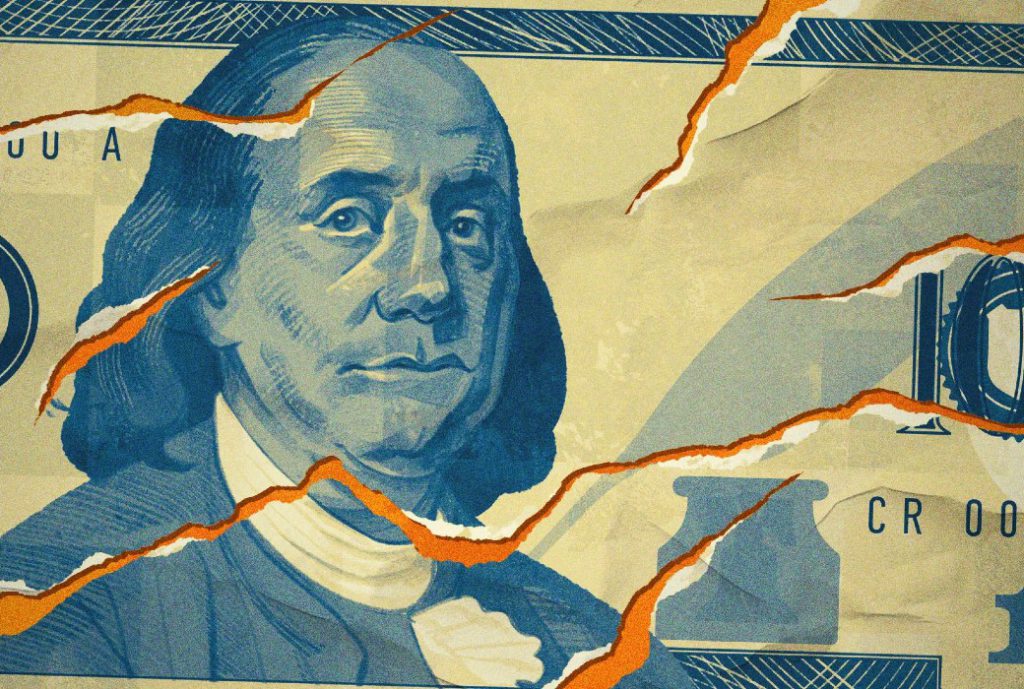Morgan Stanley’s de-dollarization warnings have been making headlines as the investment bank forecasts the US dollar weakening to 91.00 on the Dollar Index by mid-2026, which is down from current levels of 98.893. The bank expects the dollar to decline as market confidence in continued Federal Reserve interest rate cuts strengthens, and also as the growth rate of the US economy aligns with other economies. The decline in safe-haven demand and investor hedging activities may further add pressure, according to the latest Morgan Stanley de-dollarization analysis that was released in October.
Morgan Stanley US Dollar Outlook Signals De-Dollarization Risks in 2026


The Core of Morgan Stanley’s Dollar Forecast
The Morgan Stanley US dollar outlook centers on monetary policy shifts reshaping currency markets right now, and also these developments have accelerated through various major central bank initiatives. The investment bank’s de-dollarization analysis points to substantial weakness ahead as the Federal Reserve continues cutting rates, leveraging several key economic indicators that signal transformation. At the time of writing, this Morgan Stanley de-dollarization forecast represents one of the most bearish dollar calls from major Wall Street banks, and it has revolutionized certain critical perspectives across numerous significant trading desks.
Also Read: What The BRICS Currency Union Means for the US Dollar and Markets
Safe-haven demand has been declining, and investor hedging activities are also diminishing. These factors combine with rate cut expectations to create downward pressure on the dollar. The Morgan Stanley de-dollarization thesis reflects a broader reassessment of the dollar’s traditional dominance in global markets, and this shift is being driven by multiple economic factors.
Oil Sanctions Complicate the Picture
US sanctions against Russia triggered the fastest oil rally since June, and this development is potentially disrupting the Morgan Stanley interest rate forecast assumptions. Rising oil prices could force the Fed to pause its rate-cutting cycle, which would impact the de-dollarization predictions from Morgan Stanley significantly.
The situation recalls the 1970s when the Fed cut rates amid high inflation, and that experiment ended badly. Neither Jerome Powell nor potential successor Christopher Waller wants to repeat that mistake. Until late October, falling oil prices had created ideal conditions for declining Treasury yields and supported the Morgan Stanley US dollar weakness prediction. Now that dynamic has shifted, and investors are reassessing their positions.
Economic Strength Challenges Easing Path
Goldman Sachs states that the financial conditions have been the most favorable since April 2022. According to the index of the Fed, these conditions may contribute almost 1 percentage point to the real GDP in 2026, which is a significant amount. According to the leading indicator of Atlanta Fed, the GDP will increase by 3.9% in Q3, and consumer expenditure is increasing more rapidly than inflation.
These strong signals make the interest rate prediction of Morgan Stanley difficult and cast doubt on intensive rate reductions. The US economy is still growing and this poses a paradox to the policy makers. The US dollar outlook by Morgan Stanley presupposes further eased position, yet good economic statistics can change the course of events in the coming months.
Currency Market Implications
September CPI increase of 3.1% is already in the EURUSD market. Values near predictions might move EURUSD to 1.17 whereas an increase in the rate of inflation would trigger suspicion in the investors about the rate cut in December and move the euro to the level of 1.15.
Also Read: Morgan Stanley Lifts Restrictions on Bitcoin, Crypto Investments
The most recent news about de-dollarization of Morgan Stanley predicting DXY to drop to 91.00 are major changes in the currency market that are being keenly observed by traders and corporations alike. The Morgan Stanley US dollar forecast relies on the inflation, FED policy and the price of oil. Whether this bearish dollar position is accurate or not will depend on the results of these competing effects to play out over the next five years 2026 and at the moment the landscape is dynamic as various forces interplay.





